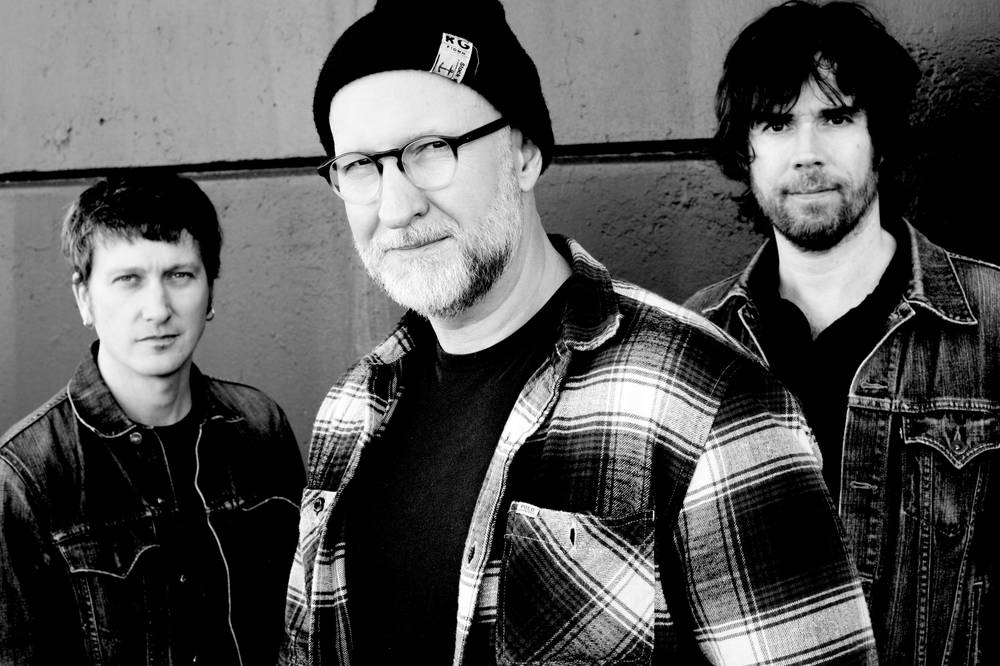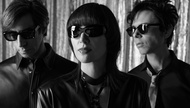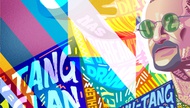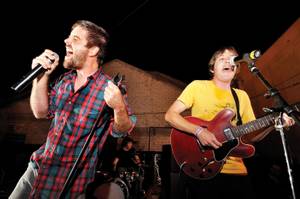2014 Fall A&E Guide
- 2014 Fall A&E Guide: Film
- 2014 Fall A&E Guide: TV
- 2014 Fall A&E Guide: Concerts
- 2014 Fall A&E Guide: Albums
- 2014 Fall A&E Guide: Arts & Culture
- 2014 Fall A&E Guide: Books
- 2014 Fall A&E Guide: Game Theory finally gets reissued
- The Weekly Interview: Bob Mould
- The Weekly Interview: NBT’s James Canfield
Bob Mould is many things: punk icon, noted memoirist, electronic enthusiast, skilled DJ and ferocious live performer. With his latest solo record—this year's harrowing, vulnerable and ultimately optimistic Beauty & Ruin—the 53-year-old is also continuing to create some of the most vibrant, exciting rock music out there today.
Calling from San Francisco, where he's lived for the last five years, Mould is in an upbeat mood as he reminisces about past visits to Vegas ("I'm a big fan of the sign graveyard. Oh my God, the last time I was there I spent half a day there, it was so cool") and notes that he’s looking forward to playing the reactivated Bunkhouse Saloon on September 30.
Any memories of your last time playing Las Vegas? Yeah, if it was the fall of '92 when Sugar put out Copper Blue, and we had The Boo Radleys opening for us. I remember after the show we got them out to casinos. They were like, "Ugh, this is so American!" I was like, "If you play the nickel slots, you can drink for free,” and they were like, "Where are they?" But that was 20 years ago, and a lot has changed since then.
Do you go to Vegas a lot personally? I used to go a lot to play cards there, maybe three times a year. Then I eased off for a while, and now that I'm in San Francisco I'm starting to go more regularly. I still like playing cards, and there's great restaurants. And now there's this club [the Bunkhouse].
Describe the process of making Beauty & Ruin? In October 2012, my dad passed away. I was writing a lot of music, and I was doing a lot of thinking about my dad and what he meant to me. He was very supportive of my music always. And I was just sort of living with his passing. There's a loss, there's a lot of reflection and sort of coming to terms with it and moving forward. That process became the four basic themes for the ideas for Beauty & Ruin: loss, reflection, acceptance and future.
In October 2013, Jason [Narducy], Jon [Wurster] and I had just gotten off the road; we had just gotten back from South America. We went home for a couple of days and then we got together in Chicago for a week and a half and learned all these songs and did all the basic tracks. I spent the next month and a half finishing the words and recording vocals and adding guitars and all the bells and whistles and mixing the record. The record was finished by December of 2013. And I sat with it a little bit, and I started thinking about the packaging and the artwork, and sort of stumbled on the dual imagery of the cover – the past and present. Those next couple of months, I think it all came together: the fog and the sun, the gray and the yellow, the contrast that is this record.
The music also has so much energy—it's like you guys got in a room and knocked everything else out. The contrast was good. Silver Age was a really fun record; it was very immediate, very up. It was a party. It was a nice complement to the 20th anniversary of Sugar's Copper Blue. This was a lot deeper record, a much wider record. And again, the contrast—look at a song like "Low Season" that's just so glacial, such a heavy opener. It's like, "Huh? Where are we going to go?" And then "Little Glass Pill" is this sort of crazy … it's like ending up in a sweltering center city bazaar, with these weird sounds and this hyper-driven energy. It's slow, and it's fast. Creating that kind of contrast from song to song, while building this integrity of the story and trying to break it into parcels of three songs, was fun. Once I knew what the challenge was, it was really fun to fit all the pieces together. It was a lot of work, and I think it worked out really well.
How did writing your memoir inspire you as a songwriter? I realized that writing a three-minute song is way easier than writing about 48 years of your life (laughs). With songs, you don’t have to have proper grammar; in fact, it's probably better if you don't have proper grammar. Telling a story, it's still the same sort of idea. For me, you try to set the stage. It's a time and a place; you try to get that established as quickly as possible. How many people are in the story? If there's a third and fourth person that enter the dialogue, where do they come in? Just basic storytelling stuff. That remains pretty much the same. As far as organizing thoughts and ideas, I've always looked at albums as trying to capture a moment in time, whether it's three minutes, a brief conversation or a whole year or two of your life.
With this record, I took a lot of snapshots. I took a lot of pictures to make sort of a photo album. With this one, creating four specific picture frames, so to speak, to put the photographs in, was a little more complicated. Maybe that was something I learned how to do from writing the book. I think 11 years of constant DJing was also a good way to learn how to tell a story with music—how to refine sequencing stories or sequencing music. All those years of DJing gave me another view on how to do that.
People come to your music from different eras— Hüsker Dü, Sugar, solo stuff, your more electronic work. What’s it like to have a continuum of fans who know different sides of you? It's really, really great. After a show, if I come out and sign stuff and take pictures with people, I can usually tell as they're approaching where they're coming from, like, "Wow, somebody from ’83, a handful from ’84, a bunch from ’86 and tons from ’89 and ‘92. And then all these people from ’05 and ’07! It's a really great sociological study, and it’s very, very cool.
Onstage, you and bandmates Jon Wurster and Jason Narducy have such chemistry together. What do you draw from each of them? Jason and I have been friends for 20 years, and he's such a great musician in his own right. He's got a pretty deep knowledge of my stuff, he's a really good sounding board for ideas and concepts and we're great friends. The three of us have a lot of overlap in our record collections, the ones we grew up with and the ones as active musicians. When Jon came on board back in ’07 or ’08, he brought this new energy, this amazing ability to play the song as well as play the drums. He understands songwriting and how to highlight the stories that I try to tell. The chemistry is really something, and we don't rehearse much. We might rehearse two hours for this tour. We're making this stuff up as we go. We're pretty confident in our abilities—we're pretty good players, and we know the stuff. We don't have dance moves or anything to work out. We just try to blow this thing up every night. It's so different than the way most people approach a tour, where there's lights and choreography. We write our setlists by hand. We do it sort of old-school.
Before you go, any secret Vegas tips to share? I always try to make a 2, 3 a.m. stop at Binion's to play some blackjack. The new towers are all fun, Aria and Cosmopolitan, [but] I try to stay off the Strip too much—I don't need a lot of pictures with Super Mario (laughs). I have some really good iPhone videos of, like, the Fred Phelps types on the Strip picketing right next to the card-flipper. You focus on the religious people and then pan 10 feet away to the guy flipping cards for the strip joints.
Bob Mould with Mercy Music. September 30, 8 p.m., $15-$20. Bunkhouse, 702-854-1414.




